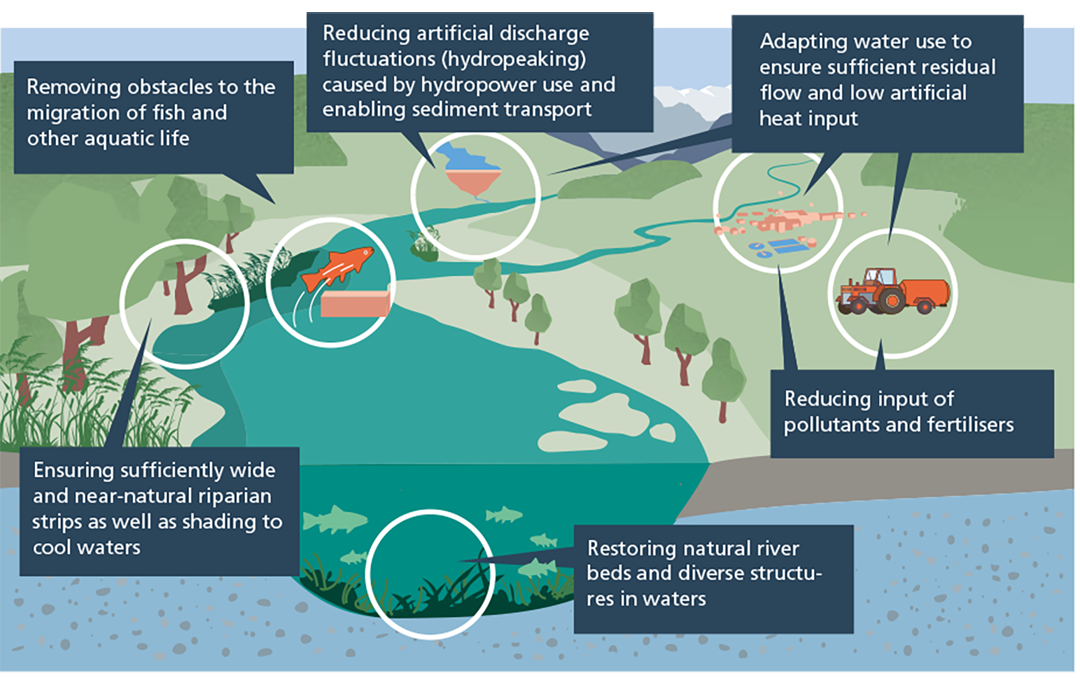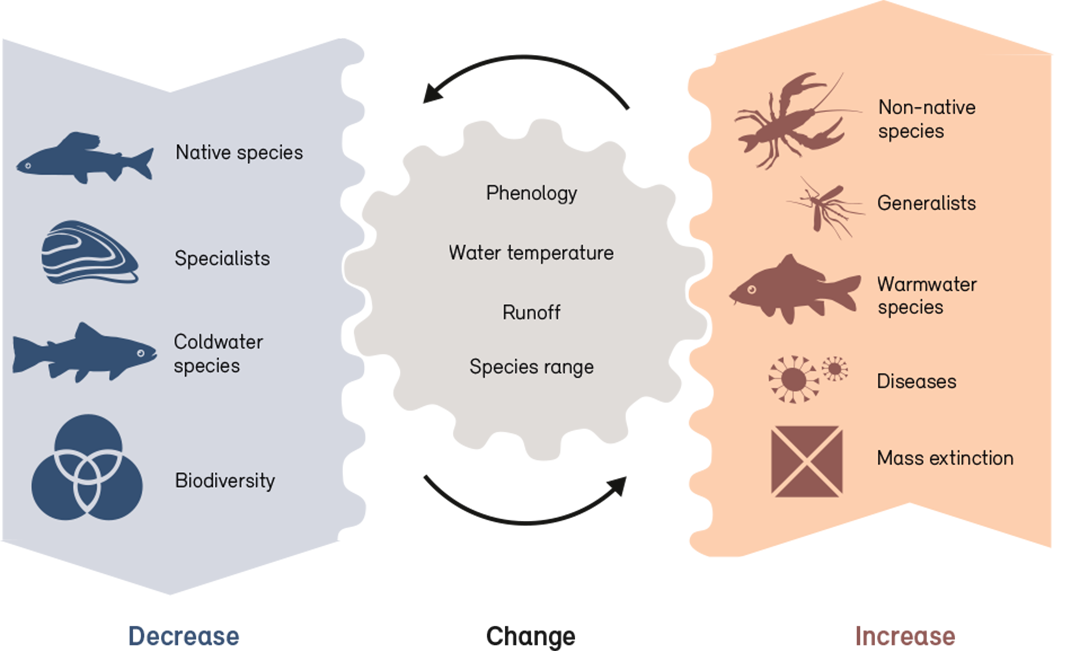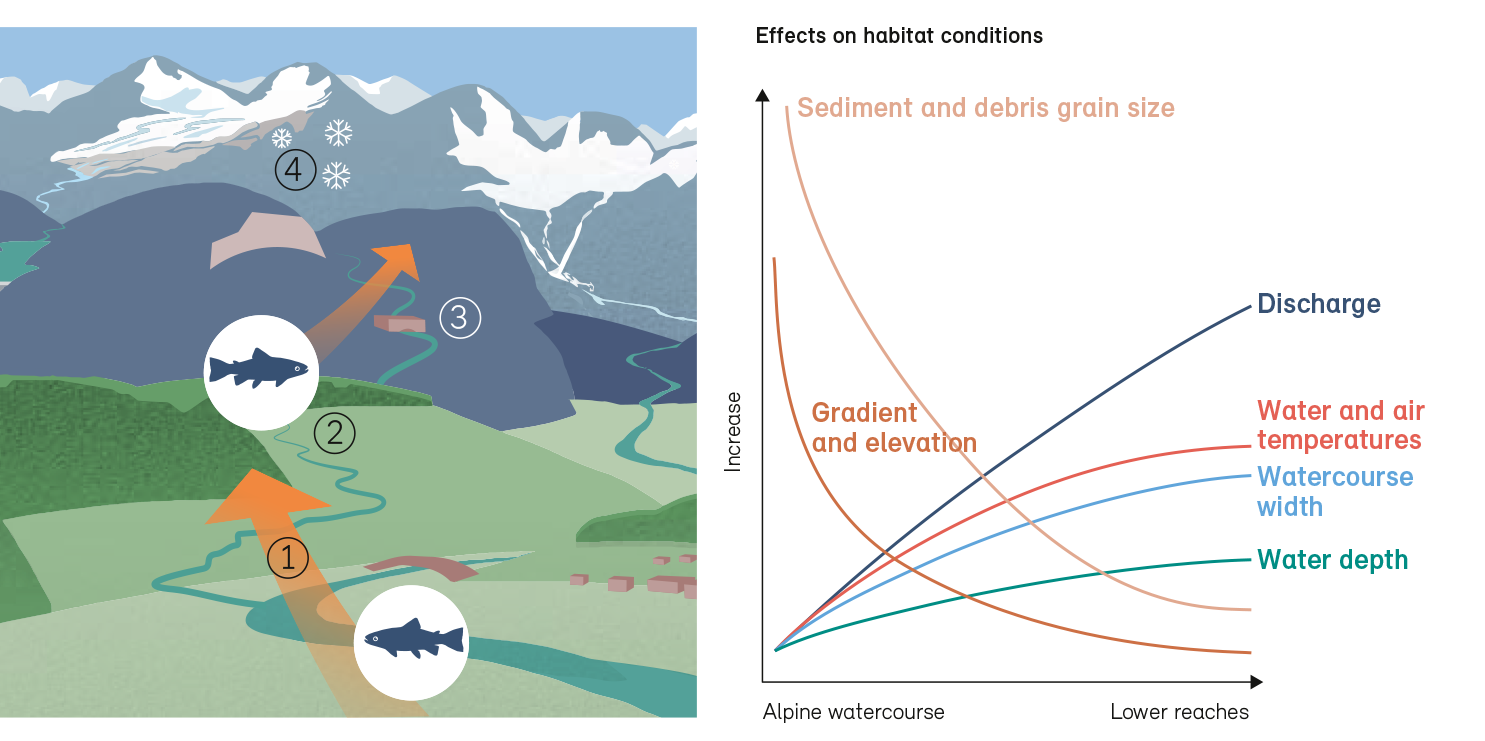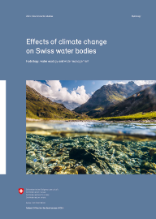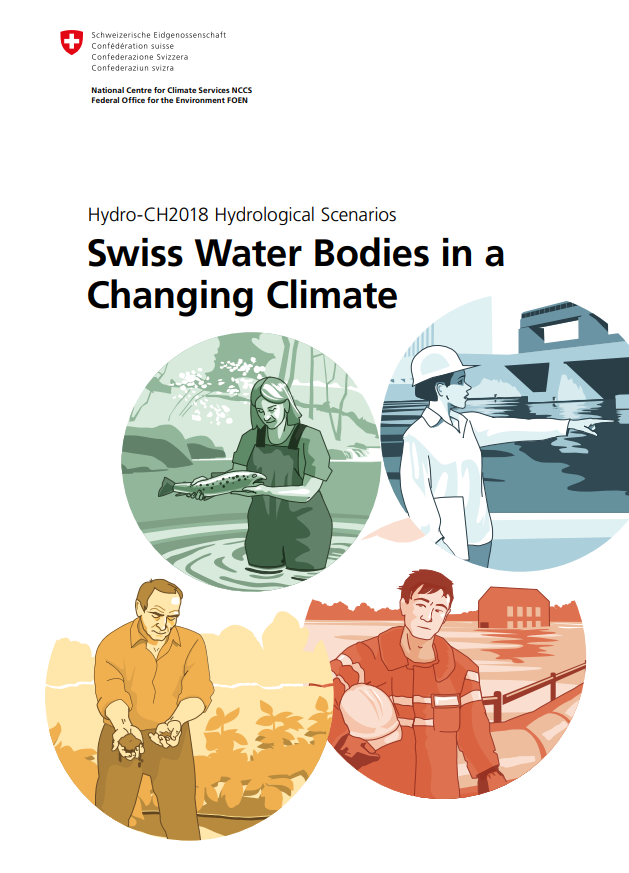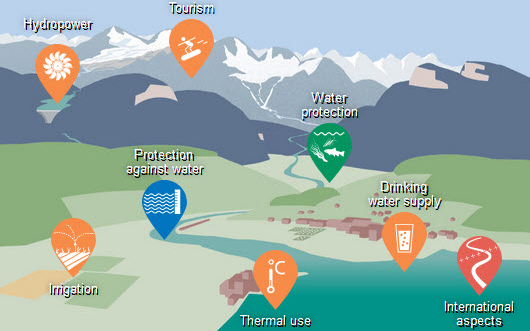Ecologically intact water bodies will be better able to cope with climate change and meet the diverse demands of society. It is therefore important to protect water resources from excessive abstraction and from contamination by pollutants and fertilisers. In addition, streams, rivers, lakes and groundwater must be kept in, or restored to, a state that is as natural as possible.
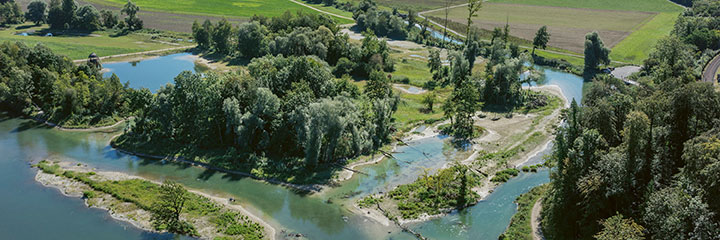
Protecting against contamination
An extensive network of sewers collect over 97% of Switzerland’s municipal waste water. It is treated at around 800 waste-water treatment plants (WWTPs) and then discharged into rivers or lakes. With climate change, this tried-and-tested system will reach its limits: if low water flows in rivers mean that the effluent from WWTPs is less diluted, releasing even treated waste water will cause too much pollution in water bodies.
It is therefore important that the volume of pollutants from settlements entering waters is lowered still further. To reduce the chemical pollution of rivers receiving a high proportion of waste water, by 2040 approximately 140 strategically chosen WWTPs are to be adapted to include additional treatment stages.
Intense rainfall events are set to increase. These events result in so much water flowing into the sewer system that WWTPs can no longer process it, meaning that some untreated waste water ends up in rivers. To avoid this, steps should be taken in the future to prevent as much rainwater as possible from sealed surfaces from entering the sewer system. Instead, there must be more systematic attempts to infiltrate or retain it within settlements. Such measures could also help to mitigate the growing problem of heat stress in cities.
Another challenge facing water bodies is the input of pollutants from agriculture: residues of pesticides and fertilisers end up in groundwater, rivers and lakes, affecting drinking water supply and aquatic ecology in many places. The increase in heavy precipitation will enhance the runoff of nutrients and pollutants from fields into waters, and higher levels of winter precipitation will transport more nitrate from fertilisers into groundwater. It is therefore vital to reduce the amount of pollutants being applied. This is the aim of the federal government’s Plant Protection Products Action Plan launched in 2017.
Measures to strengthen surface water bodies
Preventing overuse
Water abstractions for settlements, industry/commerce and agriculture are widespread in Switzerland, targeting groundwater as well as rivers and lakes. By far the most significant in terms of quantity are the approximately 1,500 abstractions by hydropower plants. The Waters Protection Act regulates how much water must remain in bodies of water below the point of withdrawal, thus preventing them from partially or completely drying up.
Wetlands, as well as many streams and rivers, require sufficiently high groundwater levels to prevent them from drying out or running too low during a drought. Economical use of groundwater abstraction is therefore a necessity.
When temperatures are higher, nature needs more water. Human use of water bodies must adapt to this additional demand or risk damaging ecosystems. Moreover, when water is scarce, certain uses must be prioritised over others. It is important to take a long view here, because hydraulic structures and operating licences can be around for many decades.
Climate change winners and losers
Aiming for a near-natural state
In Switzerland, obstacles in watercourses considerably limit the mobility of numerous aquatic organisms. Hydropower plants and weirs, for example, hinder or entirely prevent the migration of fish and other animals such as crayfish.
In the 20th century, many watercourses were straightened and structurally engineered to protect against flooding. In addition, most of Switzerland's wetlands have been drained to create land. Some 16,000 kilometres – around a quarter of all the country's waterways – have now been structurally impaired or even channelled into underground pipes.
As part of the 2011 revised Waters Protection Act, Switzerland launched two long-term projects to rehabilitate watercourses:
By 2030, fish migration should be improved at some 1,000 weirs, excessive discharge fluctuations (hydropeaking) will be eliminated at around 100 hydropower plants and 500 installations that cause bedload deficits will be remediated. In addition, work has begun throughout the country to restore more space and naturalness to some 4,000 kilometres of watercourses by 2090 and to provide better shading.
Ecological restoration and renaturation will make aquatic life more resilient to climate change, but they will also help to enhance wildlife connectivity and the beauty of the landscape. However, climate change mitigation measures are just as important in order to keep the rise in water temperatures and changes in flow rate as small as possible.
Connectivity in the context of changed habitat conditions
The key messages can also be found in the Hydro-CH2018 brochure, which is available in printed form or electronically as a download.
Further information
Last modification 22.06.2021
Contact
Federal Office for the Environment FOEN
Hydrology Division
Papiermühlestr. 172
3063 Ittigen


